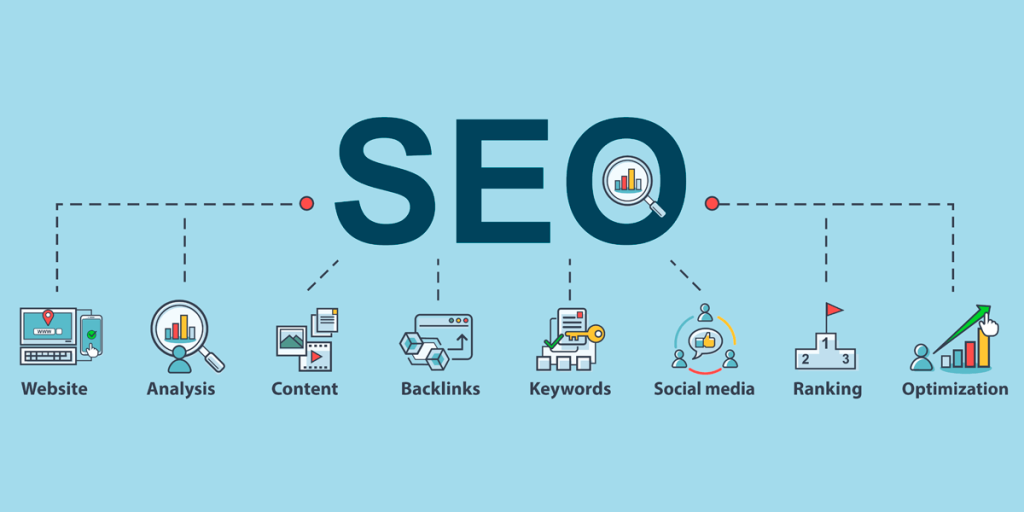
In today’s competitive digital world, having a solid SEO strategy is crucial for ensuring your website ranks higher on search engines, particularly for standalone and foreign trade websites. Whether you’re running a Direct-to-Consumer (DTC) website or catering to international customers, implementing the right SEO tactics can boost traffic, enhance visibility, and ultimately lead to higher conversions.
1. Keyword Research: The Foundation of SEO
Effective SEO begins with thorough keyword research. Identifying the right keywords that resonate with your audience is essential for driving targeted traffic. For standalone websites, focus on niche-specific long-tail keywords that directly address customer needs. For foreign trade websites, target terms that align with international markets, such as “import/export solutions” or “global B2B services.”
Properly integrating these keywords across your website’s content, meta descriptions, and headers is crucial for improving rankings. Whether you choose to work with a team like SEAMAKES or handle this internally, ensuring your website’s content is keyword-optimized is foundational to SEO success.
2. Optimize On-Page Elements
On-page optimization is key to making sure both search engines and visitors can easily navigate your site. Start by optimizing your title tags, meta descriptions, and header tags (H1, H2, H3). These elements should include relevant keywords and clearly describe the content of each page.
Additionally, maintaining a clean and effective internal linking structure helps improve the user experience and supports better site crawling. For businesses focusing on international markets, ensuring that these on-page elements are tailored to local language preferences is crucial for better reach.
3. Content Quality and User Engagement
Quality content remains one of the most important ranking factors for SEO. Creating informative, relevant, and engaging content can significantly improve your website’s performance. For foreign trade websites, content should not only address product information but also include insights on global trade, shipping regulations, and market trends to cater to international customers.
Engagement is another key aspect. The more time users spend on your site and the more pages they view, the better your site’s ranking potential. Offering multimedia content like images, videos, and infographics can also help increase engagement and keep visitors on your site longer.
4. Mobile Optimization
Mobile optimization is no longer optional; it’s a necessity. Since Google uses mobile-first indexing, ensuring that your website provides a seamless experience across all devices is vital for ranking well. If your website is responsive and loads quickly, visitors will stay longer and engage more, helping improve your rankings.
For foreign trade websites, it’s particularly important to ensure that the mobile experience aligns with the needs of international customers, who may be accessing your site from a variety of devices and regions.
5. SEO for Local and International Markets
For standalone websites, local SEO strategies should be a priority. This includes optimizing for location-specific keywords, claiming your Google My Business profile, and ensuring consistent business information across online directories.
For businesses operating internationally, foreign trade websites require a different approach. SEO for global markets involves using Hreflang tags to specify language and region targeting, as well as creating region-specific content. International SEO ensures your website reaches the right audience in their local context.
6. Leverage Google and Facebook Ads
Paid advertising can complement your SEO strategy by providing immediate visibility while you continue to build organic rankings. Platforms like Google Ads and Facebook Ads allow you to target specific geographic locations and demographics, helping to drive relevant traffic to your website quickly.
For foreign trade websites, paid ads can be especially useful in reaching targeted international markets, enabling you to advertise directly to businesses or consumers in the regions you wish to serve.
7. Track and Analyze Your Performance
Regular monitoring is essential for any SEO strategy. Using tools like Google Analytics and Google Search Console helps track key metrics such as organic traffic, keyword rankings, and conversion rates. By consistently analyzing your website’s performance, you can identify what’s working, pinpoint areas for improvement, and adjust your strategies accordingly.
Conclusion
A successful SEO strategy for standalone and foreign trade websites involves a mix of keyword research, on-page optimization, engaging content, mobile responsiveness, and a focus on both local and international markets. By focusing on these core elements, you’ll increase your website’s visibility, drive more traffic, and improve conversion rates.
If you’re looking to refine your website’s SEO and grow your online presence, focusing on these fundamental strategies can help you get ahead of the competition and reach more customers, whether locally or globally.